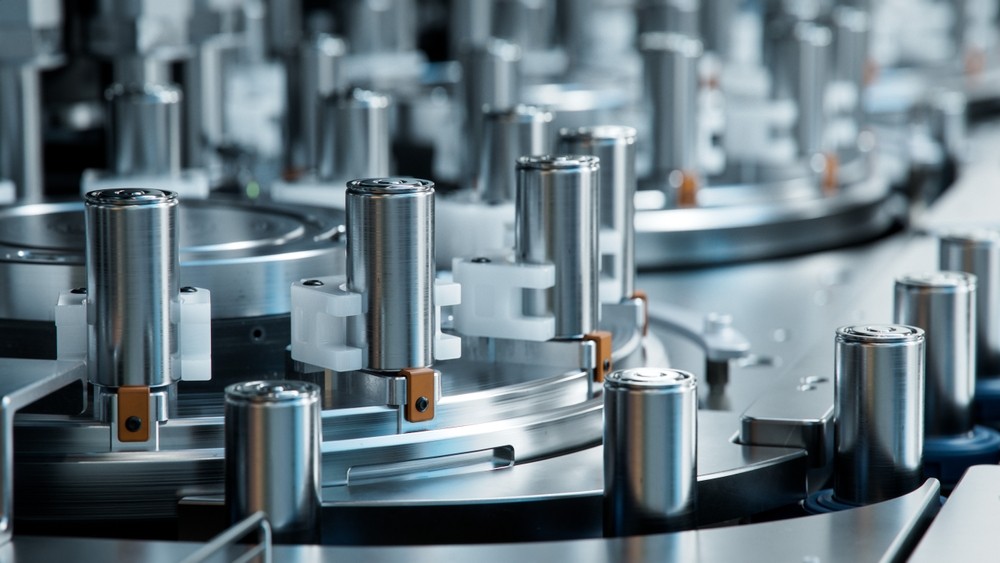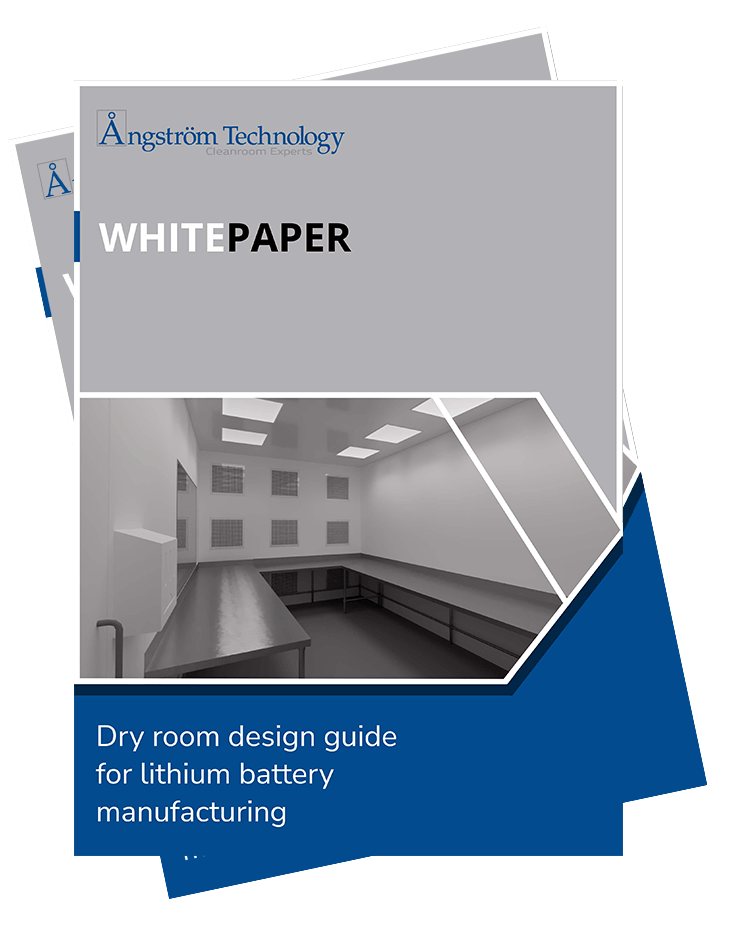
What Is the Role of Dry Rooms in Lithium-Ion Battery Manufacturing?
In today’s world, technological advancements are constantly being made. Therefore, the demand for lithium-ion batteries continues to surge, powering everything from smartphones to electric vehicles.
Behind the scenes of these powerhouses lies a critical factor often overlooked: moisture. Controlling moisture levels is paramount when manufacturing lithium-ion batteries to ensure optimal performance and longevity.
That’s where dry rooms come in! Dry rooms are specialized environments meticulously engineered to maintain low humidity levels. In this blog, we dive into the role of dry rooms in lithium-ion battery manufacturing and how they uphold industry standards for quality and safety.
The Significance of Dry Rooms in Lithium-Ion Battery Production
Lithium-ion batteries are the backbone of modern portable electronics and electric vehicles. However, despite their remarkable capabilities, these power sources possess a sensitive nature that demands precision in their manufacturing processes. Even minute traces of moisture can wreak havoc on battery components, leading to compromised performance, reduced longevity, and potential safety hazards.
Given these vulnerabilities, the role of dry rooms in lithium-ion battery production cannot be overstated. By maintaining stringent control over humidity levels, dry rooms shield against moisture, safeguarding the integrity of battery components and ensuring consistent performance and reliability.
What Is Moisture’s Impact on Battery Components?
In lithium-ion battery manufacturing, moisture is detrimental. It’s capable of undermining the integrity and performance of crucial battery components.
Here are some of the most common ways moisture impacts battery components:
- Electrolyte Degradation and Reduced Conductivity:
-
- Electrolytes, vital for facilitating ion movement between electrodes, are susceptible to moisture-induced degradation.
- Moisture triggers chemical reactions that degrade electrolyte integrity, diminishing its conductivity.
- Reduced conductivity impedes efficient ion transfer, reducing battery performance and capacity.
- Corrosion of Electrode Materials:
-
- Electrodes, composed of materials like lithium cobalt oxide (LiCoO2) or lithium iron phosphate (LiFePO4), are prone to oxidation reactions when exposed to moisture.
- Moisture-induced corrosion accelerates electrode surface degradation, compromising structural integrity and electrochemical activity.
- Diminished electrode performance leads to decreased battery efficiency and shortened lifespan.
- Implications for Battery Safety and Performance:
-
- Moisture-induced corrosion undermines performance and raises safety concerns.
- Structural damage caused by corrosion increases the risk of internal short circuits and thermal runaway events.
- These events can cause battery fires or explosions, posing significant hazards to users and surrounding environments.
Lithium-Ion Battery Manufacturing Facilities Need Controlled Environments
Any manufacturing facility creating lithium-ion batteries needs a controlled environment or a dry room. As mentioned above, humidity control is key and can wreak havoc on battery performance. By meticulously regulating humidity levels, manufacturers can mitigate risks and uphold the reliability and longevity of their battery products.
Controlled environments also play a pivotal role in ensuring product consistency across manufacturing batches. Consistency is vital in the production of lithium-ion batteries to guarantee uniform quality and performance standards. Stable humidity levels within controlled environments provide the optimal conditions for reproducible manufacturing processes, minimizing variations in battery performance between production runs.
Adherence to industry standards and regulations is fundamental in the lithium-ion battery manufacturing sector. These standards often mandate specific environmental conditions, including humidity levels, to ensure manufacturing quality and compliance. By maintaining controlled environments that meet or exceed these standards, manufacturers demonstrate their commitment to producing high-quality, safe, and reliable lithium-ion batteries.
What are the Key Features of Dry Rooms?
Dry rooms are meticulously designed environments tailored to meet the stringent requirements of lithium-ion battery manufacturing. These specialized facilities incorporate a range of crucial features to control humidity levels and maintain optimal conditions for battery production.
Let’s explore some of the essential features of dry rooms:
- Temperature and Humidity Control:
-
- Precise temperature and humidity control are fundamental in dry rooms to prevent moisture buildup and ensure stable manufacturing conditions.
- Advanced HVAC (Heating, Ventilation, and Air Conditioning) systems regulate temperature and humidity levels within tight tolerances, typically kept within the range of 20-25°C and humidity levels below 1% relative humidity.
- Air Filtration and Purification Systems:
-
- High-efficiency air filtration and purification systems maintain clean and contaminant-free environments.
- HEPA (High-Efficiency Particulate Air) filters and activated carbon filters are utilized to remove particulate matter, dust, and airborne contaminants, ensuring the integrity of battery components during production.
- Importance of Sealed Environments and Airlock Systems:
-
- Sealed environments are essential in dry rooms to prevent external moisture and maintain controlled humidity levels.
- Airlock systems with double-door entryways facilitate controlled access to the dry room, minimizing the risk of moisture contamination from outside environments.
Angstrom Technology’s Dry Room Solutions for Lithium-Ion Battery Manufacturing
At Angstrom Technology, we specialize in designing and delivering efficient dry rooms tailored for lithium-ion battery manufacturing. With our expertise, we create stable, low dewpoint environments crucial for preserving battery integrity. Our solutions address humidity control, static, particulate matter, and out-gassing, meeting international standards and regulations while optimizing energy efficiency.
One standout feature of our dry rooms is the industry-leading HVAC systems we offer. Known for their exceptional efficiency, capability, and life-long energy consumption, our mechanical systems surpass all other solutions available in the US. This superior performance sets us apart and is a key reason why clients choose Angstrom, recognizing the unmatched energy efficiency and reliability of our HVAC technology.
Achieving ISO classification, our dry rooms ensure quality and compliance. With over 100 cleanrooms delivered annually across America, the UK, and Europe, Angstrom Technology is your trusted partner for reliable cleanroom solutions in battery manufacturing.
Partner with Angstrom Technology for Industry-Leading Dry Room Solutions
Angstrom Technology stands as a beacon of innovation in lithium-ion battery manufacturing. Our commitment to providing cutting-edge solutions is unwavering, as we design and deliver top-of-the-line dry rooms tailored specifically for battery production.
Whether you require a custom dry room solution or seek to optimize your cleanroom environment, our team of experts is dedicated to delivering tailored solutions that meet and exceed your expectations. Partner with Angstrom Technology for reliable, industry-leading cleanroom solutions that drive innovation and excellence in lithium-ion battery manufacturing.




